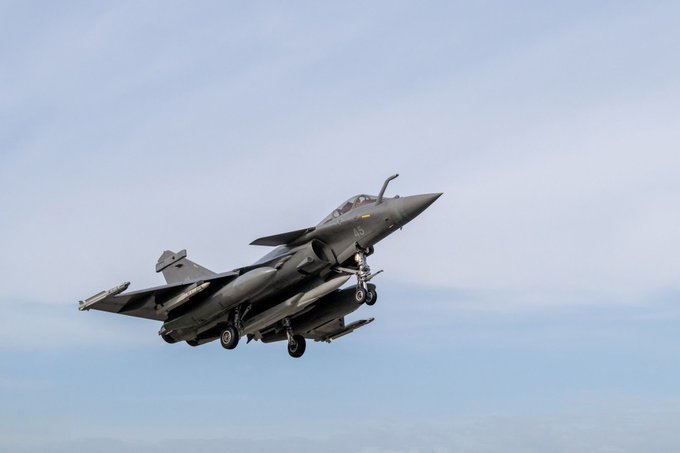
France has released the first official images of its latest-generation nuclear-capable cruise missile, the ASMPA-R, following a successful unarmed test launch conducted by a French Navy Rafale-M fighter jet. The milestone marks the weapon’s formal operational entry into service with the country’s Naval Nuclear Aviation Force (FANU).
In a statement, the Ministry of the Armed Forces confirmed that an evaluation shot of the renovated medium-range air-to-surface missile had been executed successfully. The FANU is a key pillar of France’s nuclear deterrent, operating from the aircraft carrier Charles de Gaulle and its embarked fleet of Rafale-M jets.
The missile has been in service with the French Air and Space Force’s Strategic Air Forces (FAS) since 2023. With this first naval test, both air and naval branches are now fully equipped to deploy the upgraded ASMPA-R variant.
Armed Forces Minister Catherine Vautrin noted that this firing was the second ASMPA-R launch overall but the first carried out by the naval nuclear aviation arm. She highlighted that the test came only days after the missile’s official induction into FANU service.
France previously conducted an ASMPA-R test firing from a land-based Rafale in 2023, though earlier images concealed the missile’s design. The newly released photographs offer the clearest view yet of the upgraded strategic weapon.
The ASMPA-R represents the second major upgrade of the ASMP family, originally fielded in 1986. Using a ramjet engine and liquid-fuel propulsion system, the missile can reach speeds of up to Mach 3 and now boasts an extended range of approximately 600 kilometres, compared with the earlier ASMPA-A’s 500-kilometre reach.
Both versions share a similar outer profile, but the ASMPA-R features redesigned fin structures, enhancing aerodynamic stability. While France has not disclosed details of any new warhead, analysts continue to speculate about upgrades beyond the TNA nuclear payload used in previous variants.
The ASMP program began more than four decades ago when France sought a cruise missile capable of penetrating advanced air defences. Developed by Aerospatiale, now part of MBDA, it was intended as a more flexible nuclear deterrent option compared with gravity bombs of the era.
Looking ahead, France is already developing the ASMP’s successor—the ASN4G, a hypersonic nuclear-armed missile expected to enter service by 2035. It will equip future Rafale F5 aircraft and maintain France’s standing as one of the world’s most advanced nuclear powers.
The ASMPA-R’s deployment strengthens France’s airborne nuclear component at a time of heightened global tensions and renewed transparency among nuclear-armed states. It also enhances the flexibility of France’s nuclear dyad, which includes four Triomphant-class ballistic missile submarines armed with M51 SLBMs.
French officials emphasized that the successful test meets objectives set out in the nation’s Military Programming Law (2024-2030). President Emmanuel Macron has recently signalled openness to strengthening Europe’s collective nuclear security as strategic threats evolve.
With its naval integration complete, the ASMPA-R significantly boosts France’s ability to project nuclear deterrence from both land bases and the sea.